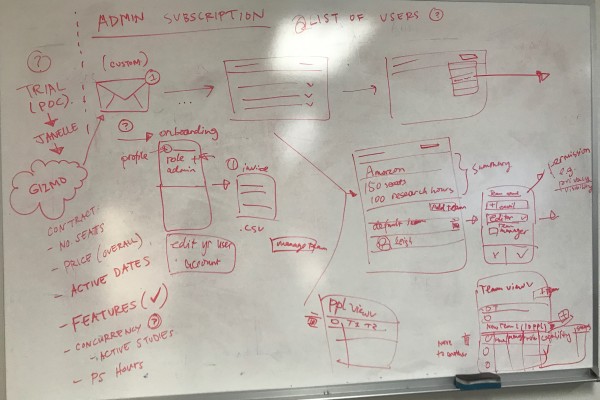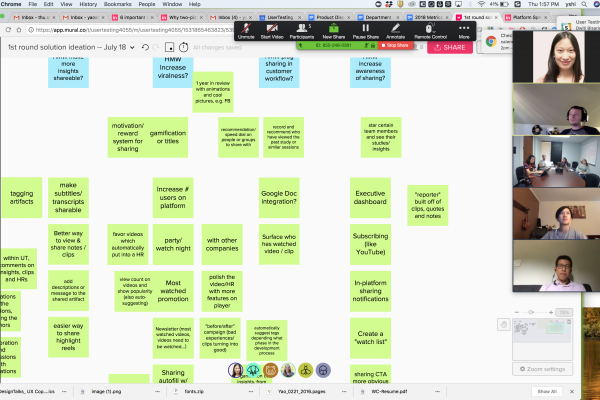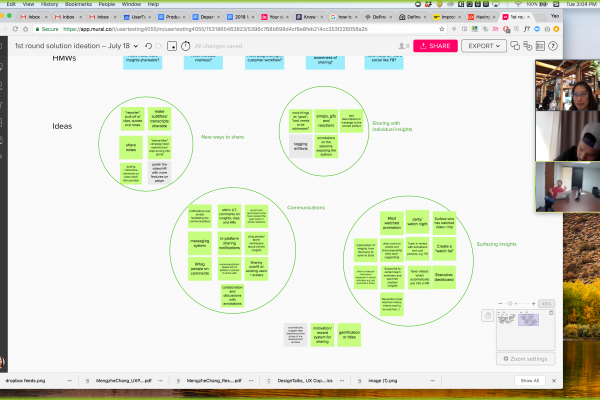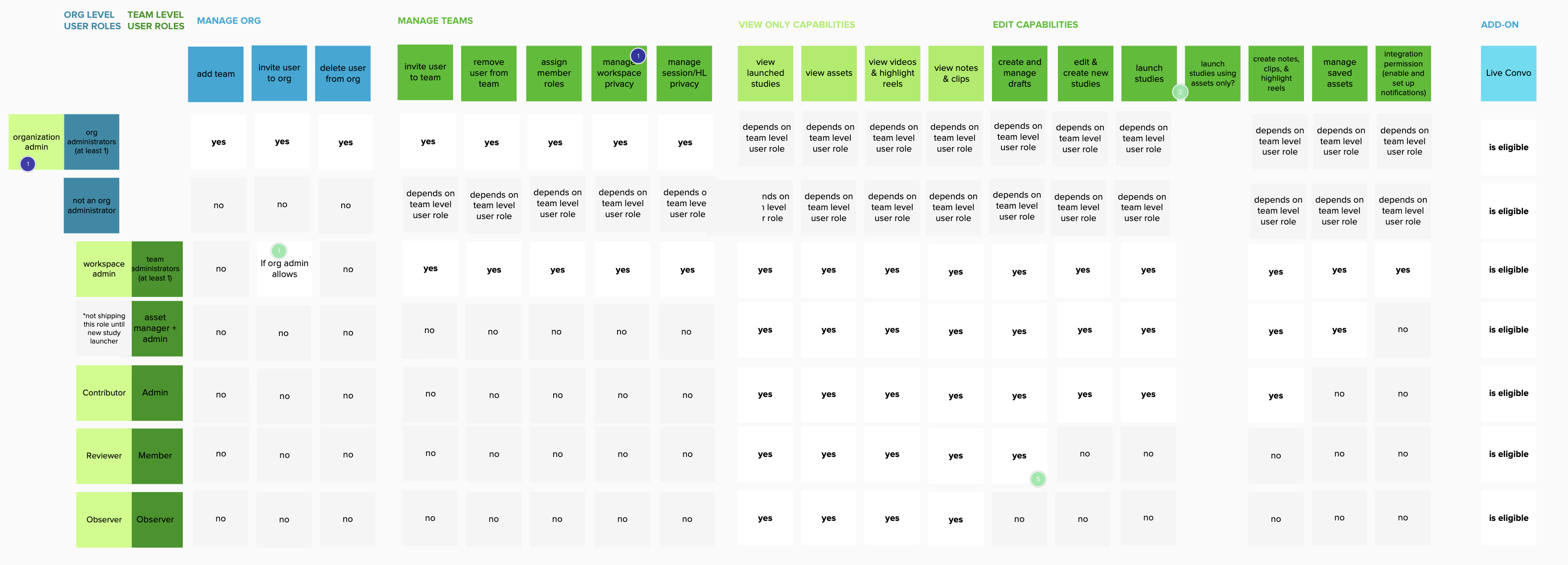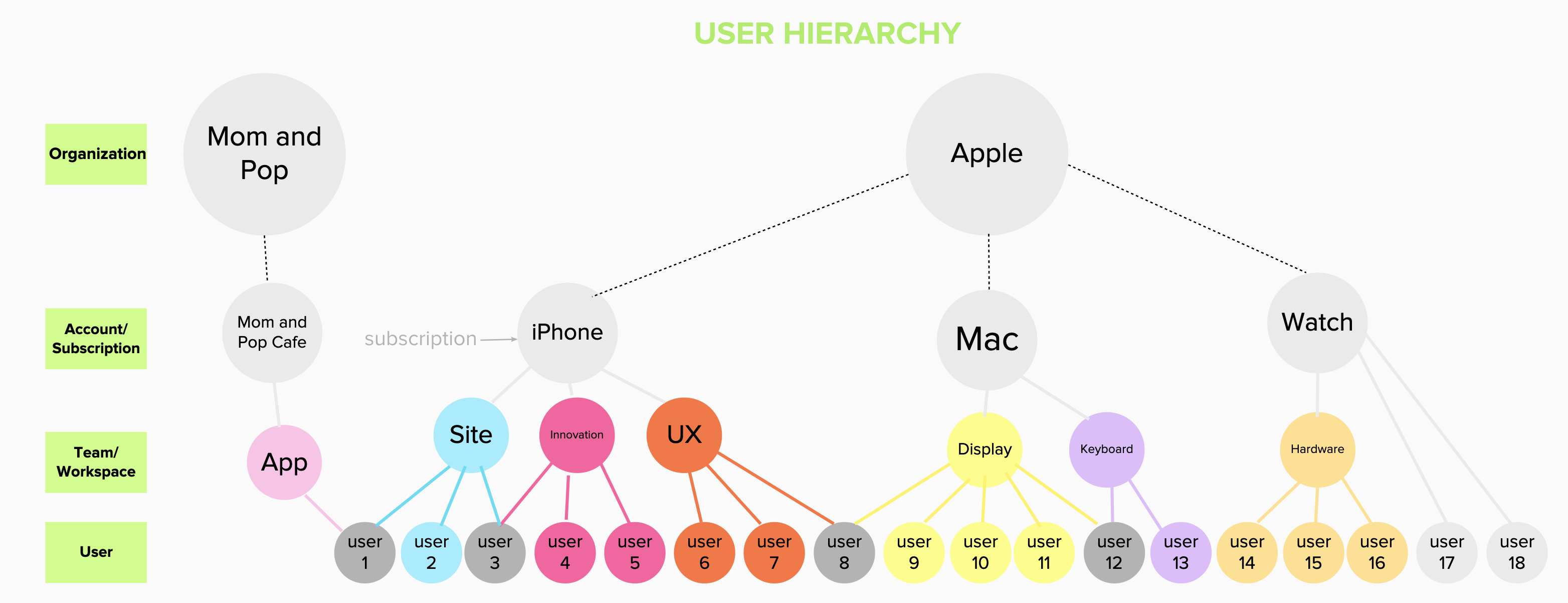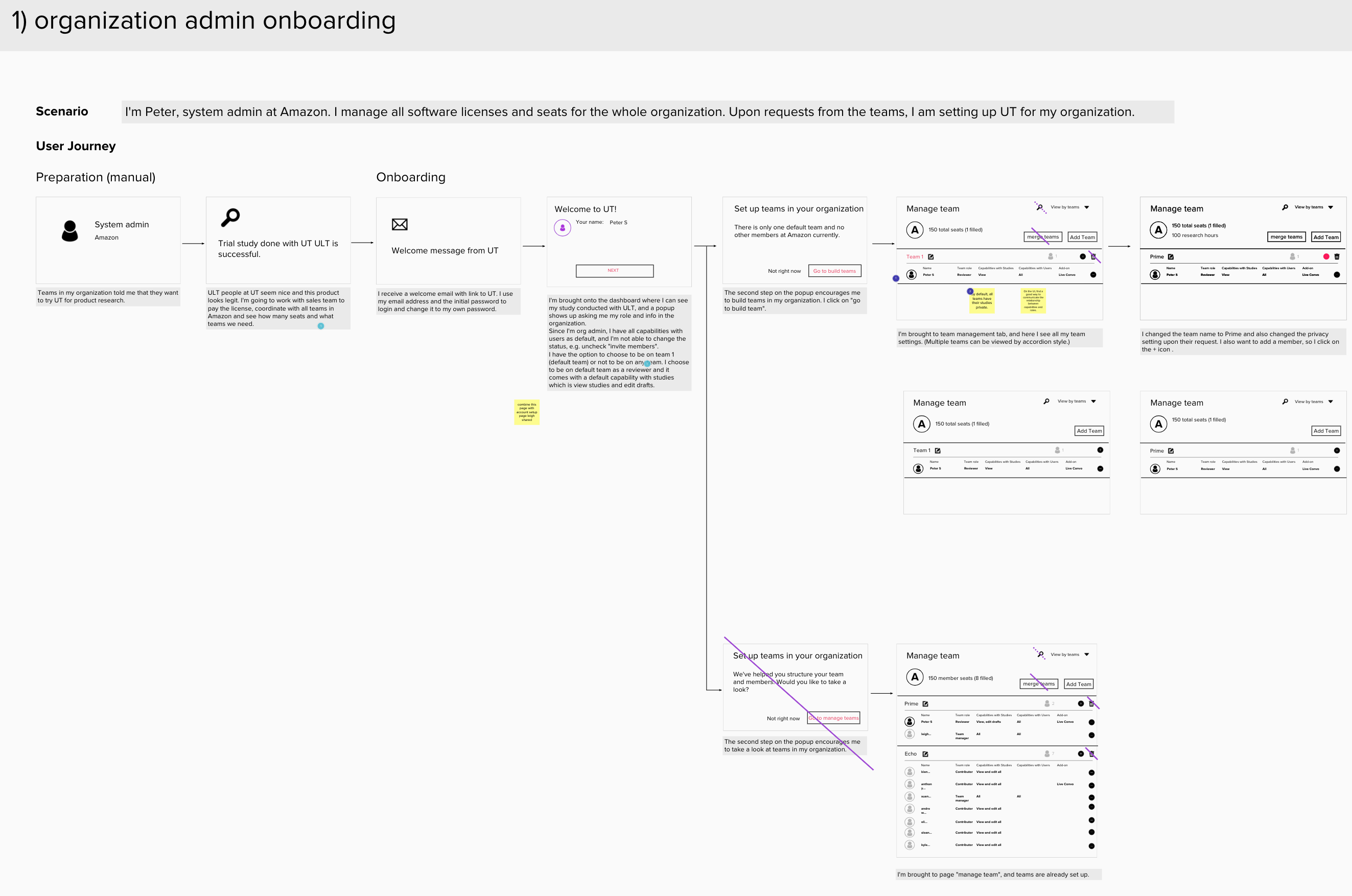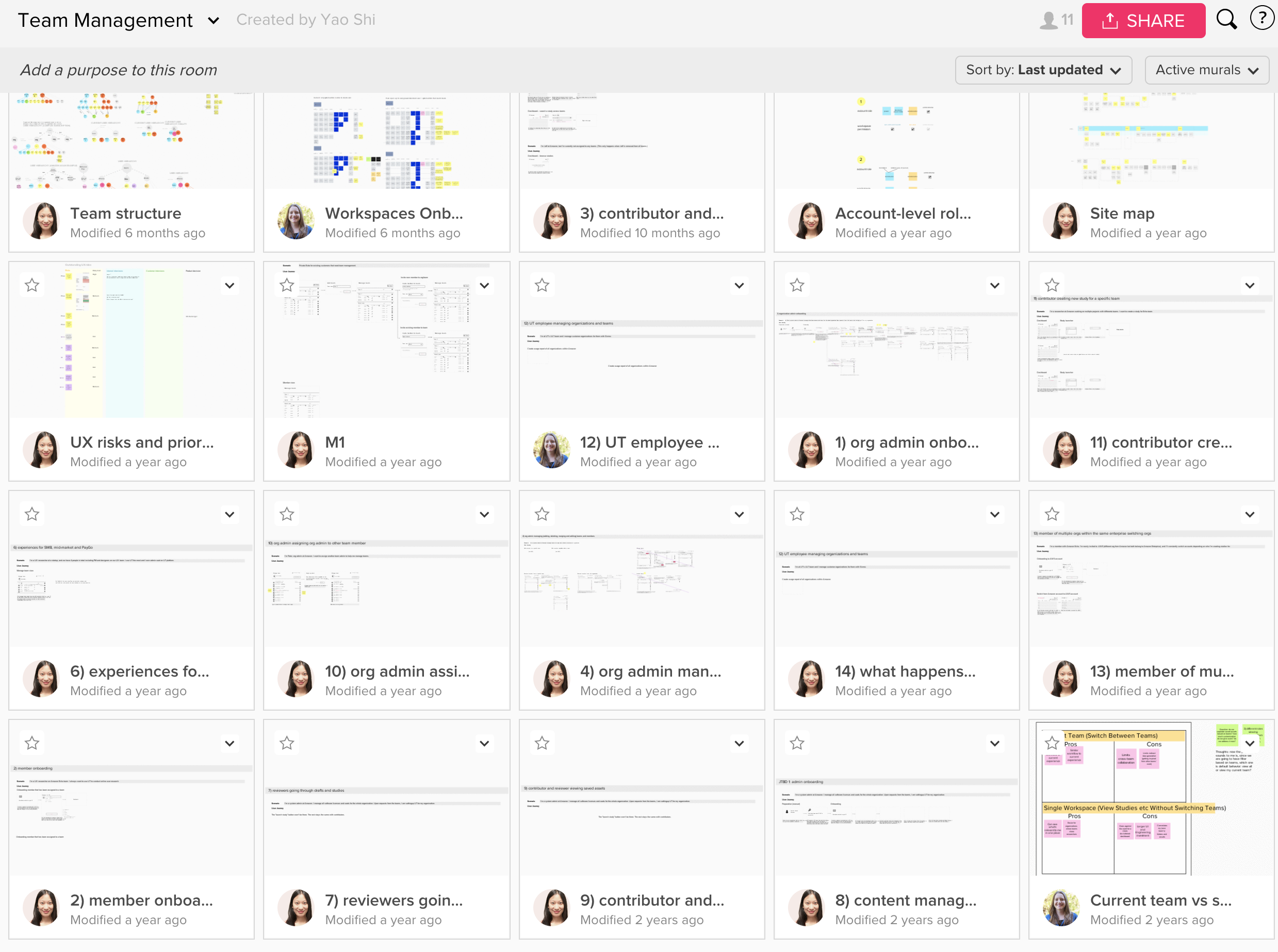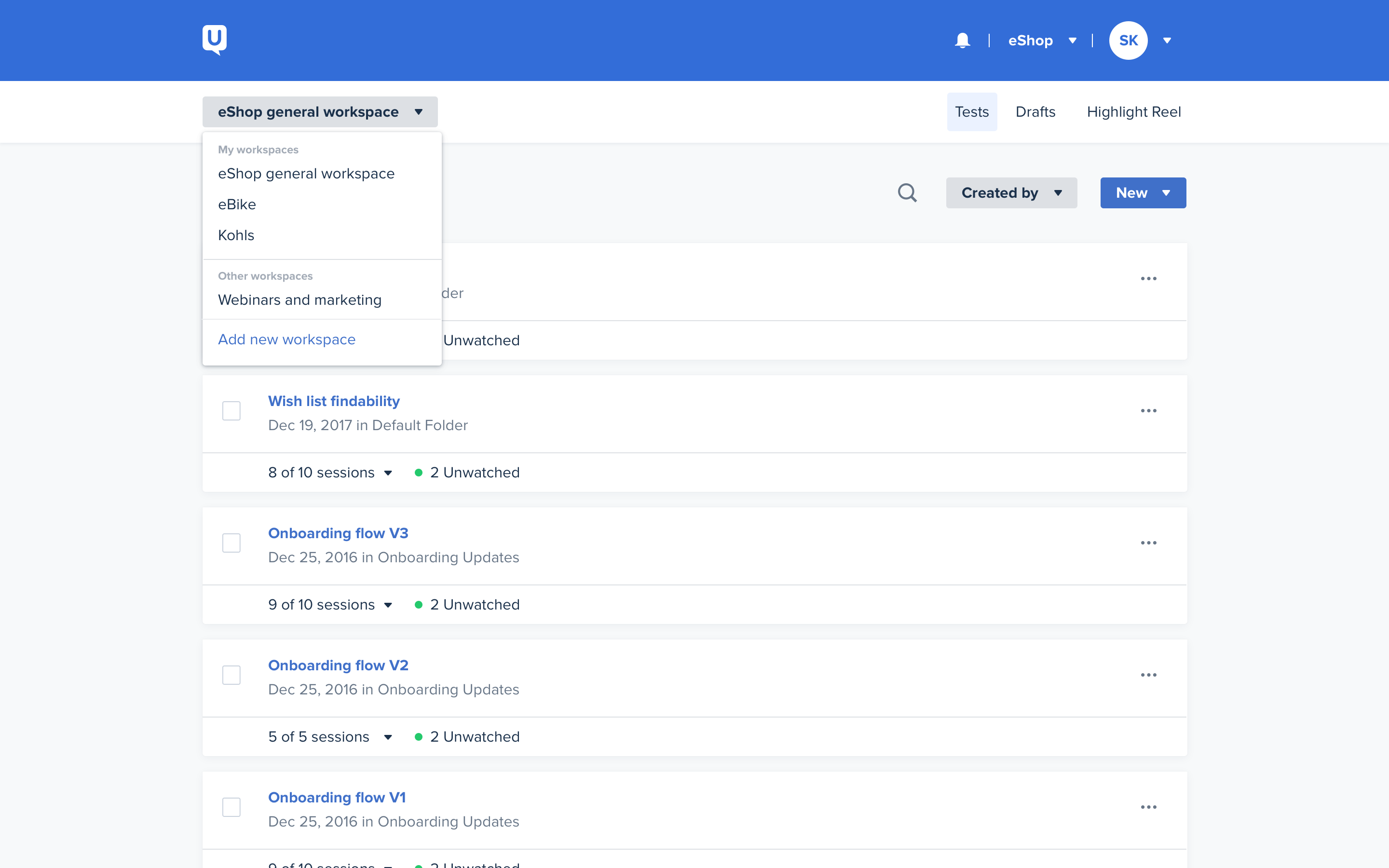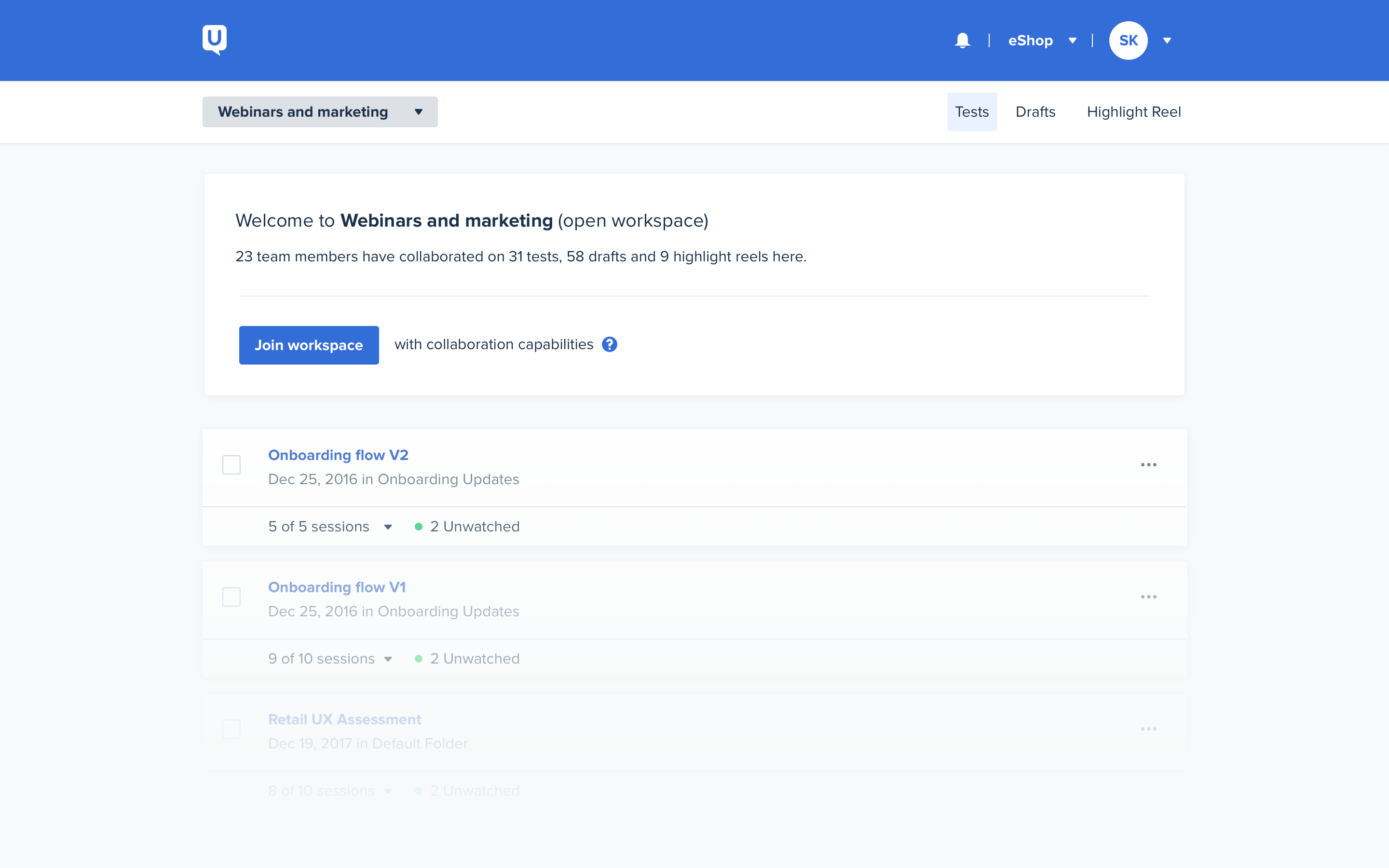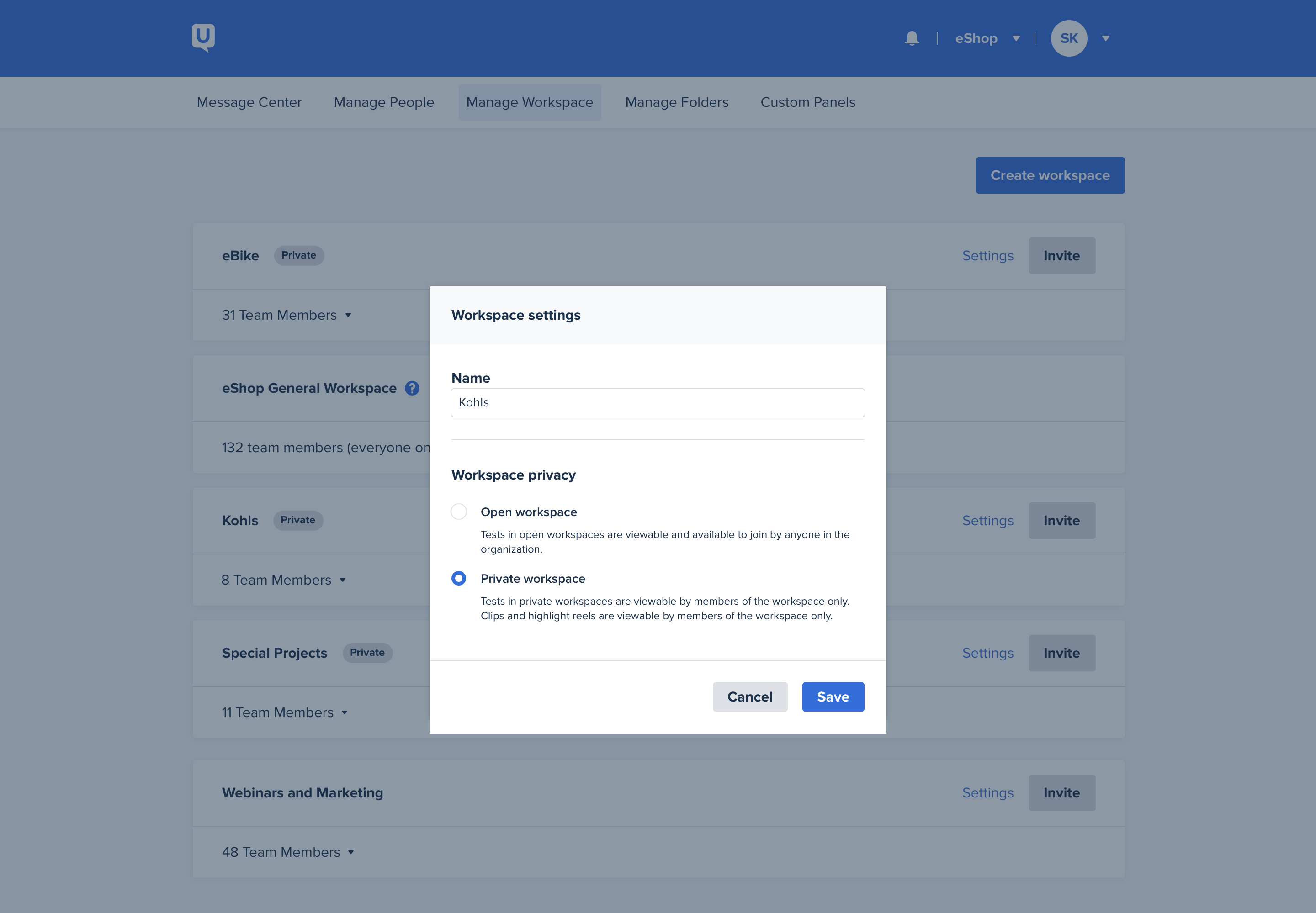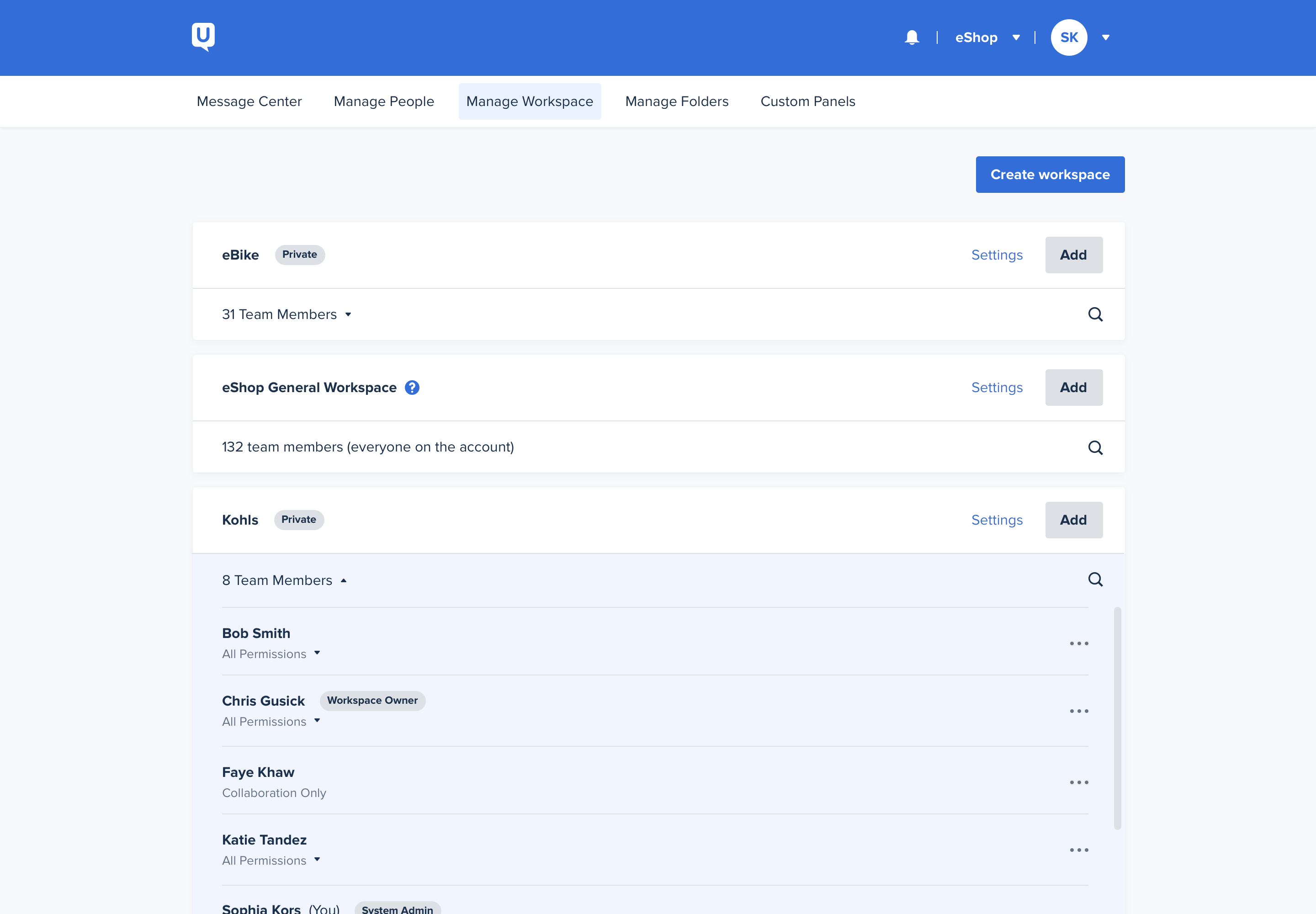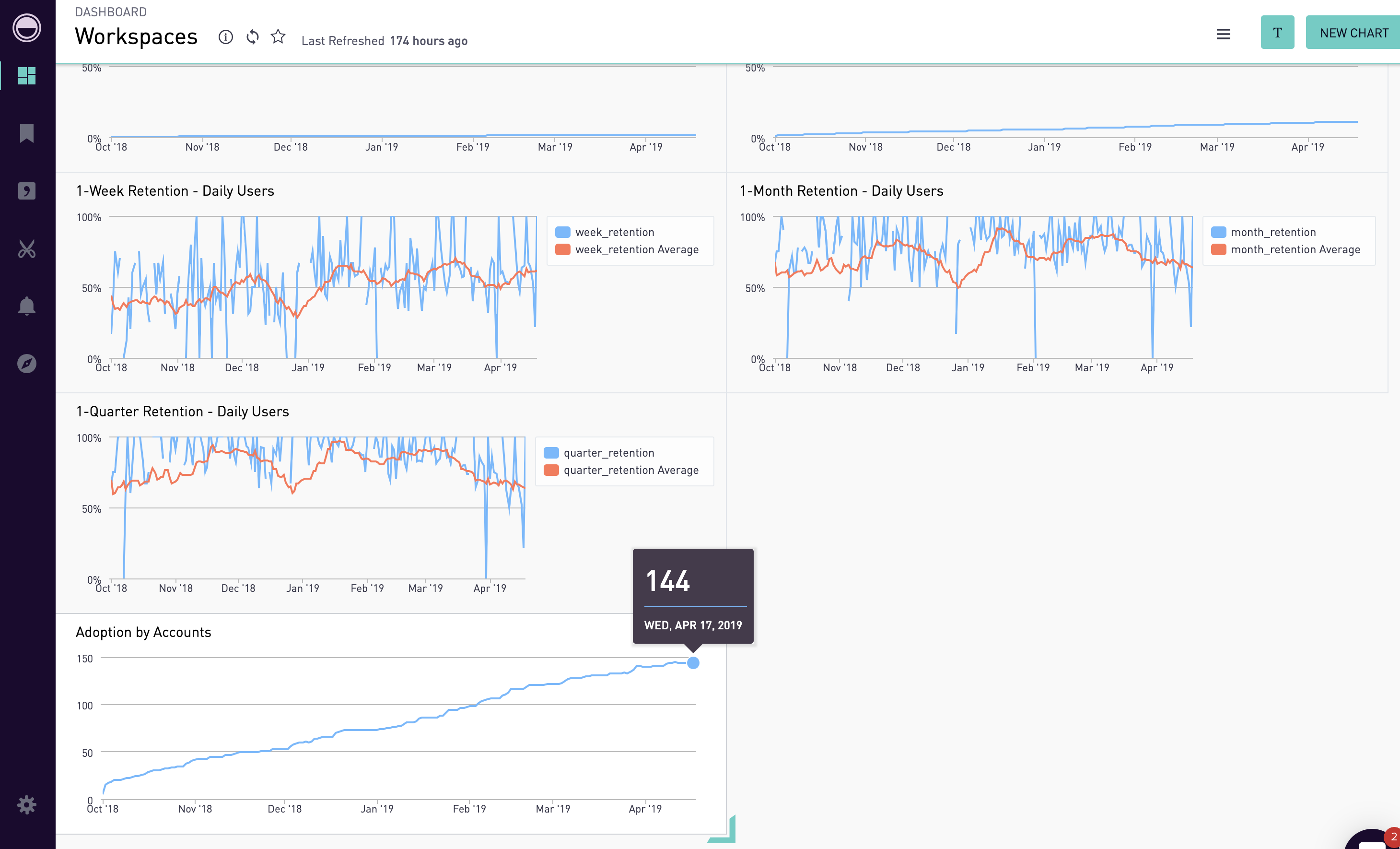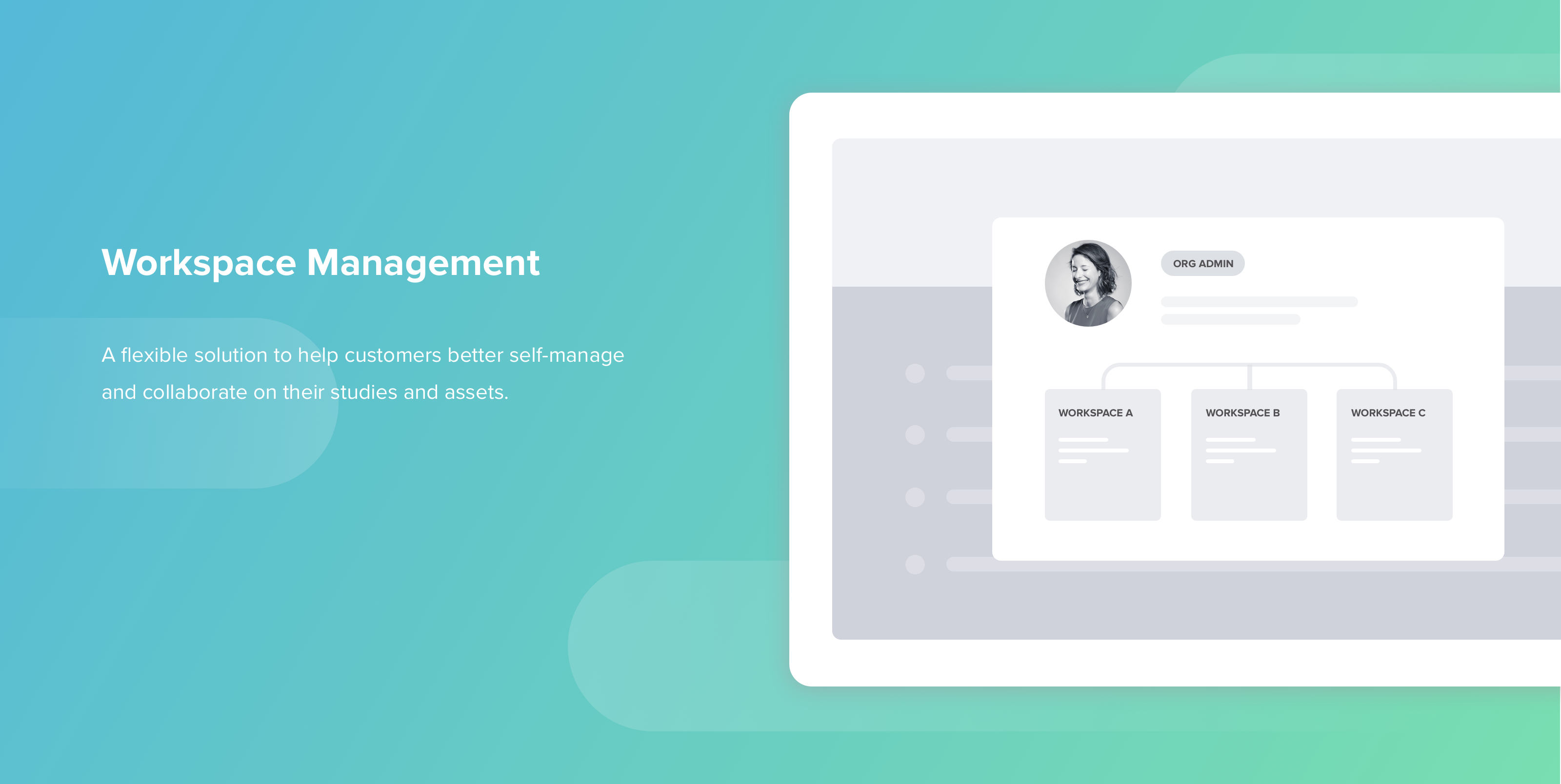UserTesting platform never had a workspace or team management structure. Customers could easily find themselves lost in 500 hundred tests created by all of their team members on the platform, which could be a huge pain for research teams, especially those who actively launch tests.
Since 2017, UserTesting has started transforming market strategy from facing small businesses into servicing enterprise customers. Based on this new business objective, this project is tailored to execute product strategy around enterprise-readiness: bring the platform into the modern age while also improving collaboration and organization for enterprise product and research teams. (To view more about enterprise-readiness, please click here.) I was embedded within an engineering squad as the product design lead, partnering with a PM, a UX researcher and a data scientist.
Our budget was 2 quarters and 6 full-time engineers (including 1 tech lead and 1 QA engineer). We spent 1 month understanding customer needs and internal POVs, then 2 months iterating and testing the end solutions, and finished the project in 2 quarters after splitting the vision into 2 major milestones.




